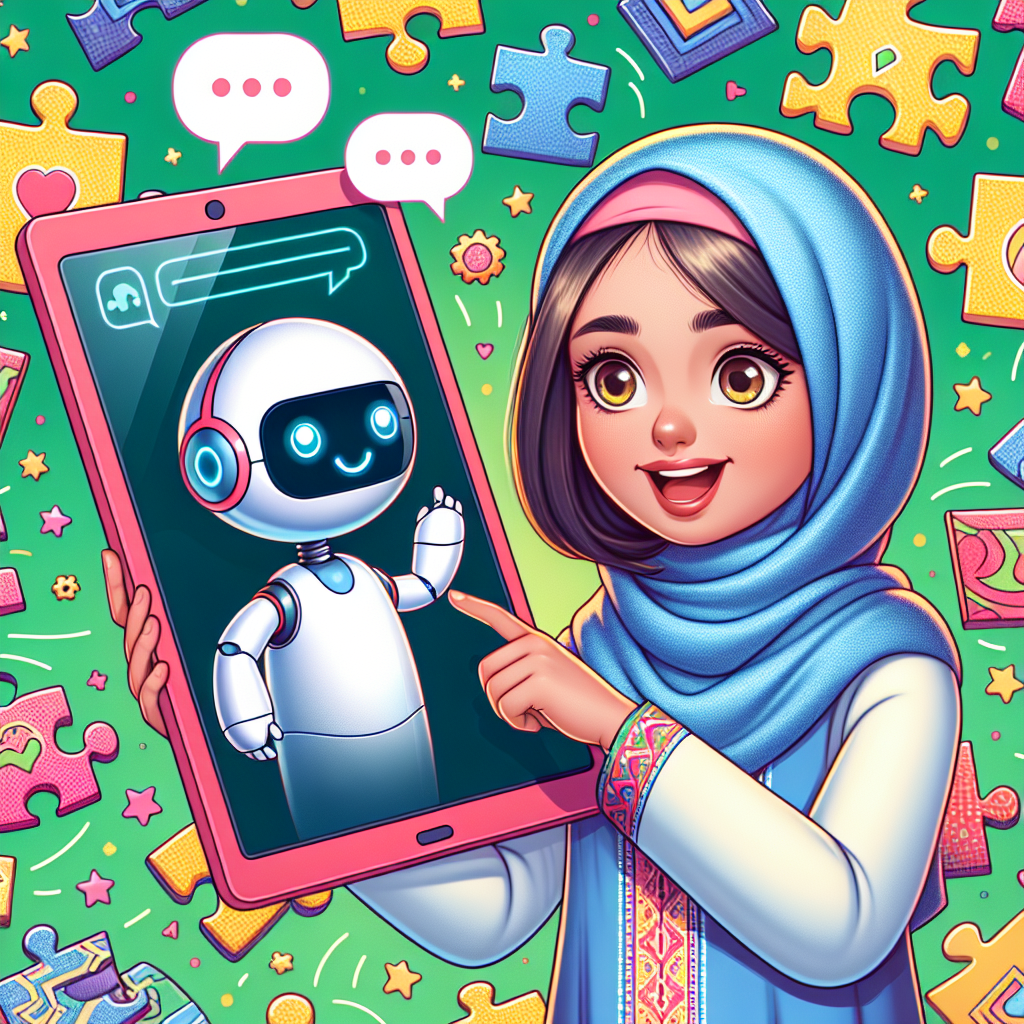Unlocking New Worlds: Harnessing AI for Autism Support with ASD-Chat

Unlocking New Worlds: Harnessing AI for Autism Support with ASD-Chat
The world is rapidly evolving with technology, but certain fields still face resource shortages, such as autism care. For families navigating the complexities of Autism Spectrum Disorder (ASD), timely intervention and support can make a world of difference. However, what happens when the demand for professional care outstrips supply? Enter ASD-Chat, an innovative solution that combines cutting-edge AI with established clinical methodologies to aid children with autism.
Welcome to our exploration of how ASD-Chat, a dialogue intervention system utilizing AI, seeks to transform ASD intervention and make quality support more accessible.
Why ASD-Chat Matters
Autism Spectrum Disorder is a lifelong condition that affects how a person communicates and interacts with others. With an estimated 1 in 59 children diagnosed globally, there’s a critical need for effective interventions. Early diagnosis followed by timely, consistent intervention can vastly improve outcomes for children with ASD, enabling many to lead fuller lives.
Yet, the harsh reality is that many families face barriers in accessing these essential services, often due to a lack of available professionals. ASD-Chat steps in as a digital ally, aiming to provide intervention that mirrors professional therapies right from home, courtesy of AI and computational magic.
How ASD-Chat Works
Making Sense of AI and VB-MAPP
Let’s break down those acronyms: VB-MAPP stands for Verbal Behavior Milestones Assessment and Placement Program. It’s a widely used tool in assessing and planning interventions for children with language challenges, particularly those with ASD. It essentially acts as a roadmap for identifying where a child’s language abilities are and where they need to go.
ASD-Chat incorporates these foundations into its framework, using ChatGPT (a large language model, or LLM, developed by OpenAI) to simulate human-like conversations. Think of ChatGPT as a well-read assistant who’s always eager to chat about your favorite topics, but instead of reading books, it’s trained on diverse internet texts.
Tailored Conversations: Topics that Resonate
In practical terms, ASD-Chat engages children through turn-based dialogues on relatable topics like food, animals, toys, family, and colors. By using visuals and familiar themes, the system creates a friendly setting for kids to practice social communication, allowing them to answer simpler ‘what’, ‘who’, and ‘where’ questions while steering clear of more complex ‘why’ or ‘how’ inquiries, which can be challenging for children with ASD.
Engaging with Empathy: More Than Just Chatting
ASD-Chat isn’t just about words on a screen or in the air; it’s about interaction. With avatars that nod, greet, and respond, it simulates a warm, engaging environment that feels less like a test and more like a playful interaction, much like talking to a favorite cartoon character. The whole setup encourages learning through natural conversation, reducing anxiety and increasing participation.
Why This Technology is Revolutionary
Filling the Gap of Traditional Methods
Many current technological interventions for ASD suffer from rigidity—sticking to a one-size-fits-all communication path. With ASD-Chat, customization is key. The system adapts its prompts based on each child’s interests, making every session unique and engaging. This flexibility helps maintain the child’s interest over time, an area where many traditional methods falter.
Real-World Applications and Future Potential
ASD-Chat illustrates how AI can partner with us to address real-world challenges. For communities with limited access to specialized therapists, such AI-driven tools offer a cost-effective and scalable solution to provide continual support. Furthermore, as research continues, these systems could evolve to enrich intervention strategies, possibly incorporating visual question-answering or even more nuanced emotional cues.
Evaluation: How Effective is ASD-Chat?
Chewing Over the Numbers
The research behind ASD-Chat involved trials with children who have ASD, comparing interactions with the system versus traditional human interventionists. The results were promising—children engaged more actively with the virtual agent and spoke more during interactions than with human counterparts. While human interventionists still edged out in response quality due to their nuanced expertise, ASD-Chat was not far behind.
Reading the Signs: Physiological Responses
Interestingly, the physiological data collected, like changes in blood oxygenation levels (a marker of brain activity), showed that ASD-Chat stimulated similar levels of neurological engagement as traditional methods. This suggests that not only does ASD-Chat capture a child’s interest, but it also activates the necessary cognitive and social areas in the brain.
Key Takeaways
-
Bridging the Gap: ASD-Chat offers a promising solution for expanding access to autism care, especially where human resources are scarce.
-
Technology Meets Humanity: By combining AI dialogue capabilities with established clinical practices like VB-MAPP, ASD-Chat provides a personalized, responsive approach to intervention.
-
Increased Engagement: Children’s higher engagement levels when interacting with ASD-Chat highlight its potential as a compelling tool for facilitating social communication development.
-
Potential for Growth: Continuous advancements in AI mean that ASD-Chat can evolve, integrate new features, and offer even more comprehensive support.
ASD-Chat stands as a testament to the power of combining technology with empathy, creating innovative ways to support those on the autism spectrum. As AI continues to advance, the potential to enhance such tools grows, paving the way for all children to find their voice.
If you are looking to improve your prompting skills and haven’t already, check out our free Advanced Prompt Engineering course.
This blog post is based on the research article “ASD-Chat: An Innovative Dialogue Intervention System for Children with Autism based on LLM and VB-MAPP” by Authors: Chengyun Deng, Shuzhong Lai, Chi Zhou, Mengyi Bao, Jingwen Yan, Haifeng Li, Lin Yao, Yueming Wang. You can find the original article here.




